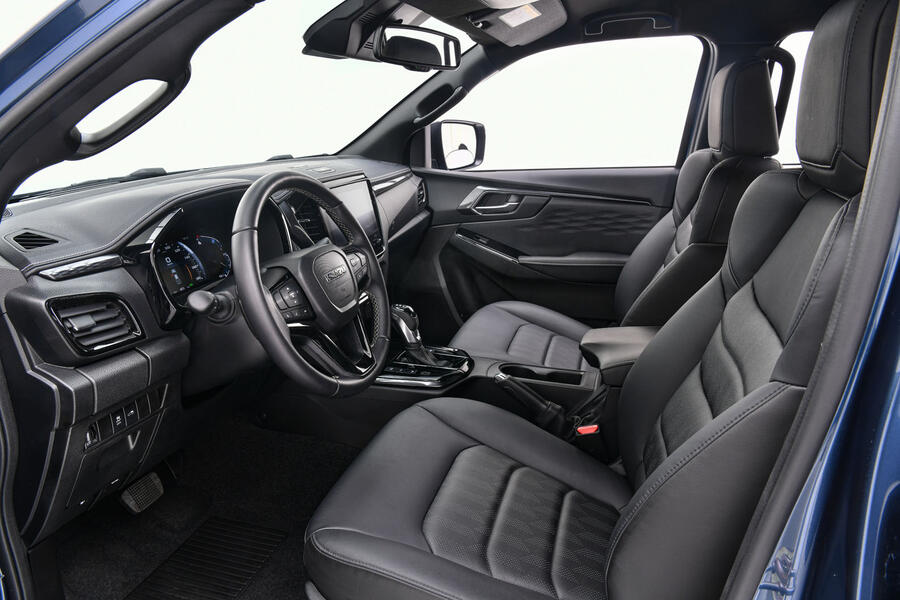Twin-motor EV version of popular pick up lands in 2026 with one-tonne payload and 163-mile range
Isuzu has revealed an electric version of its D-Max pick-up truck with full-time four-wheel drive and a payload of more than a tonne.
The D-Max EV is making its debut at the LCV show in Birmingham this week ahead of a UK launch in February next year - when it will go up against the upcoming KGM Musso EV and new Maxus eTerron 9.
It's all but identical to the diesel D-Max (Isuzu's only model line in Europe) but swaps the oil-burner for a pair of electric motors – one on each axle – giving combined outputs of 188bhp and 240lb ft for a 0-62mph time of 10.1sec and a top speed north of 80mph.
Power is supplied by a 66.9kWh battery under the floor, which is good for a WLTP range of 163 miles and can be charged at speeds of up to 50kWÂ for a 20-80% top-up time of one hour.
Importantly, the battery doesn't have a drastic impact on the D-Max's off-road ability, with the EV claiming 210mm of ground clearance and a wading depth of 600mm. It has approach and departure angles of 30.5deg and 24.2deg.
In addition to permanent four-wheel drive, the D-Max EV has a dedicated Rough Terrain Mode for "extreme off-road capability".
While it uses the same ladder chassis as the existing truck, Isuzu has fitted a bespoke de Dion rear suspension system in place of the leaf springs for improved handling.

Just as important is the fact that the EV is rated to carry more than 1000kg in its loadbed and can tow up to 3500kg - although Isuzu has yet to say what impact this will have on the range. The D-Max EV weighs 2350kg at the kerb.
Otherwise, the D-Max EV is largely identical to the diesel D-Max, inside and out - down to the kit list, which includes a touchscreen infotainment screen with smartphone mirroring, a digital driver's display, dual-zone climate control, parking sensors front and rear and heated front seats.

The D-Max EV is being offered only in double-cab form for now.
Prices have yet to be confirmed, but it's likely to command a substantial premium over the diesel D-Max, which starts at £36,505 before VAT.
Pre-sales will begin in the second half of this year, and the first customers will receive their D-Max EV in March 2026.



